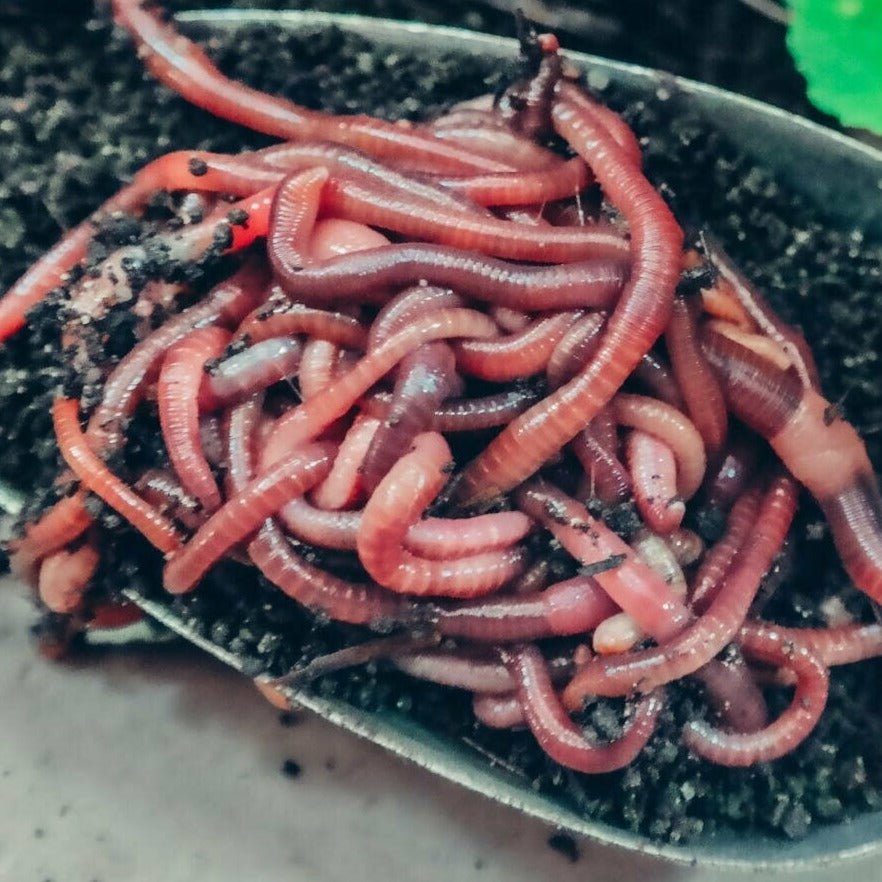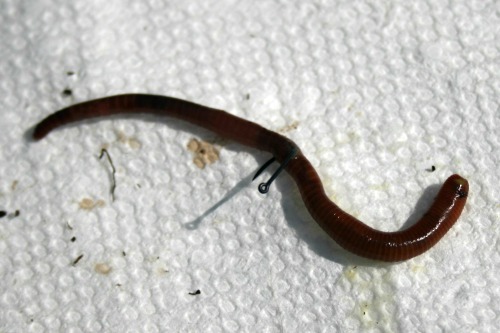Red Wigglers: The Unsung Heroes of Organic Waste Recycling
Red wigglers, or Eisenia fetida, offer as critical agents in the natural waste reusing process, transforming discarded materials into useful vermicompost. Their efficient break down of natural issue not only improves dirt top quality yet also adds to sustainable waste management methods. As the world significantly looks for remedies to combat waste buildup and boost farming performance, comprehending the duty of these worms becomes vital. What mechanisms permit them to grow in garden compost settings, and how can they be properly made use of in both household and business settings? Discovering these inquiries exposes the broader implications of vermicomposting in our eco-friendly landscape.
What Are Red Wigglers?
The exceptional durability of red wigglers, scientifically referred to as Eisenia fetida, emphasizes their crucial function in natural waste recycling. These tiny, reddish-brown earthworms are usually located in decaying organic matter, such as compost stacks and manure heaps. Lake Hickory Bait. Unlike other earthworm types, red wigglers prosper in nutrient-rich environments and are extremely efficient at breaking down organic products, making them vital for vermicomposting

(Red Wiggler Express)In addition to their duty in waste reduction, red wigglers add to dirt wellness by boosting dirt structure and oygenation via their tunneling activities (Lake Hickory Bait). Their visibility in composting systems not only enhances disintegration rates however also promotes a sustainable method to lose management, highlighting their relevance in environmental preservation efforts
Benefits of Composting With Worms
Composting with worms, specifically red wigglers, uses countless advantages that boost both waste management and soil wellness. Initially, these worms efficiently damage down natural waste, converting it into nutrient-rich vermicompost that enriches dirt. This procedure increases decay, allowing for a much faster recycling of cooking area scraps and other natural materials contrasted to traditional composting methods.
In addition, the vermicompost generated by red wigglers is including useful microorganisms, which assist enhance dirt framework, oygenation, and wetness retention. This enhances the general wellness of plants, promoting strenuous development and raised yields in yards and farming setups. The use of worms in composting decreases the manufacturing of greenhouse gases, such as methane, adding to a much more sustainable waste monitoring system.

How to Begin Vermicomposting
Developing a vermicomposting system is a simple process that can produce substantial advantages for both waste monitoring and soil enrichment. To begin, pick a suitable container, such as a plastic bin or wooden box, with ample air flow openings to make sure appropriate air movement. The dimensions should ideally be about 2 feet by 3 feet, enabling ample room for the worms to grow.
Following, prepare bed linen product, which can contain shredded paper, cardboard, or coconut visit this site coir. This bedding needs to be dampened to develop an appropriate environment for the worms. As soon as the bed linens is in location, introduce red wigglers (Eisenia fetida) right into the bin, commonly around one pound of worms for every square foot of area.
Complying with the placement of worms, add natural waste, such as fruit and veggie scraps, coffee premises, and smashed eggshells. With these actions, you will effectively launch a vermicomposting system that contributes to lasting waste monitoring and enriches your soil.
Maintaining a Healthy Worm Bin
(Lake Hickory Bait)Maintaining a worm container prospering calls for normal attention and care to ensure the health of the red wigglers and the effectiveness of the composting process. Appropriate upkeep starts with monitoring the wetness levels; the container must perspire but not saturated. A good guideline is to keep an uniformity similar to a wrung-out sponge.
Carefully mixing the bed linens and food scraps every few weeks avoids compaction and makes certain that all worms have access to oxygen. In addition, it is essential to feed the worms properly.
If the bin becomes also warm or chilly, the worms may become stressed. By vigilantly taking care of these factors, one can keep a robust and effective worm bin.
Influence On Sustainable Living
The successful upkeep of a worm bin not just benefits the wellness of red wigglers but also adds considerably to sustainable living practices. By reusing organic waste, such as kitchen scraps and backyard particles, red wigglers assist draw away considerable amounts of material from garbage dumps. This reduction in waste not only lowers greenhouse gas discharges yet also decreases the environmental concern connected with waste monitoring.
Furthermore, the spreadings created by red wigglers function as a nutrient-rich organic fertilizer, enhancing soil health and wellness and promoting plant development. This natural option to chemical fertilizers supports sustainable agriculture and gardening methods, decreasing dependence on synthetic inputs that can hurt ecosystems. In addition, worm composting fosters recognition of waste monitoring, motivating people and areas to take on more lasting habits.

Final Thought
In summary, red wigglers function as important factors to natural waste reusing via their reliable decomposition of organic materials. Their capacity to create nutrient-rich vermicompost enhances soil health and sustains sustainable agricultural methods. By integrating vermicomposting into waste administration techniques, individuals and neighborhoods can dramatically minimize waste while promoting environmental sustainability. The function of Eisenia fetida in promoting healthy and balanced communities highlights the relevance of these microorganisms in attaining lasting living and enhancing soil fertility.